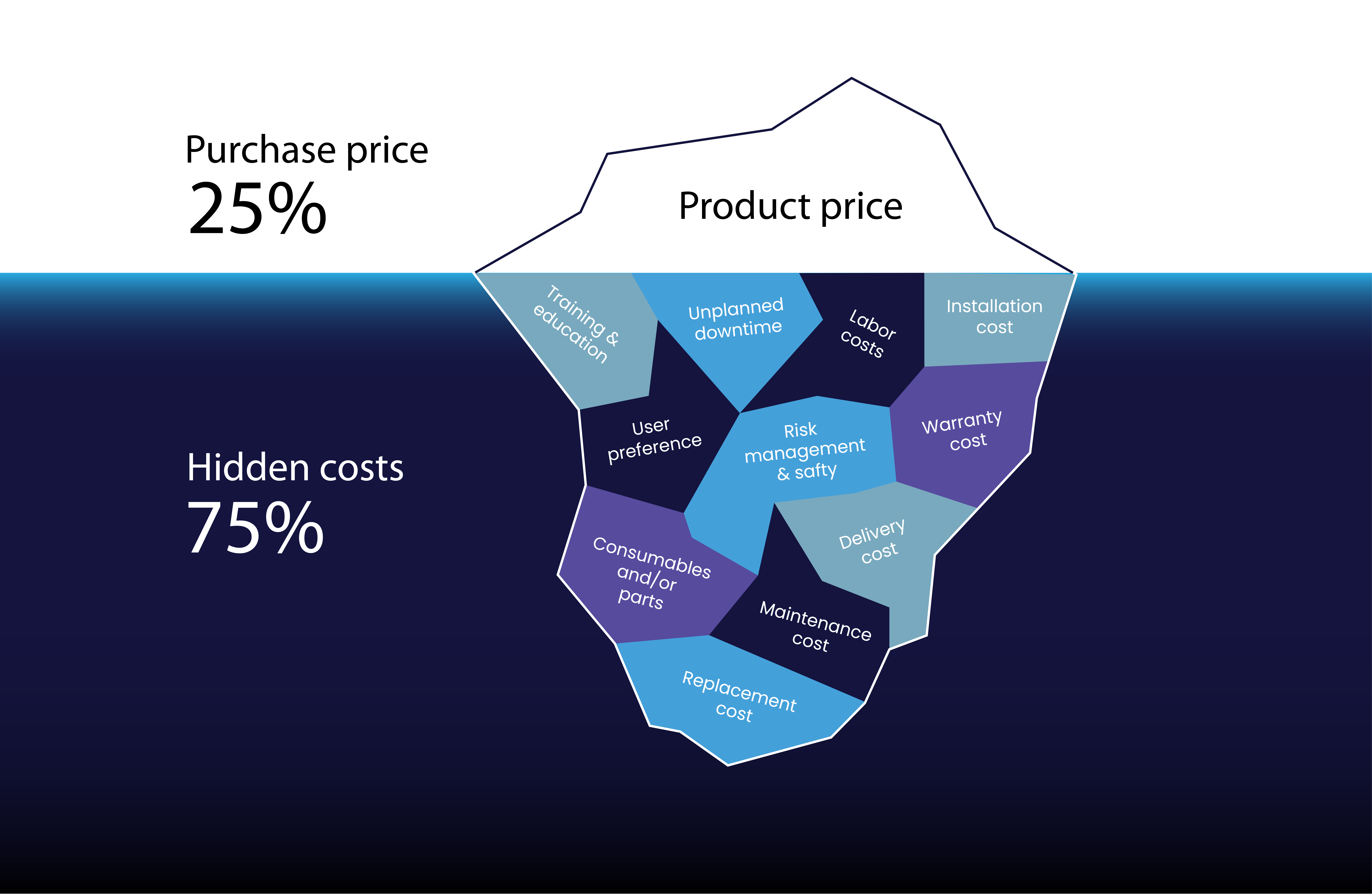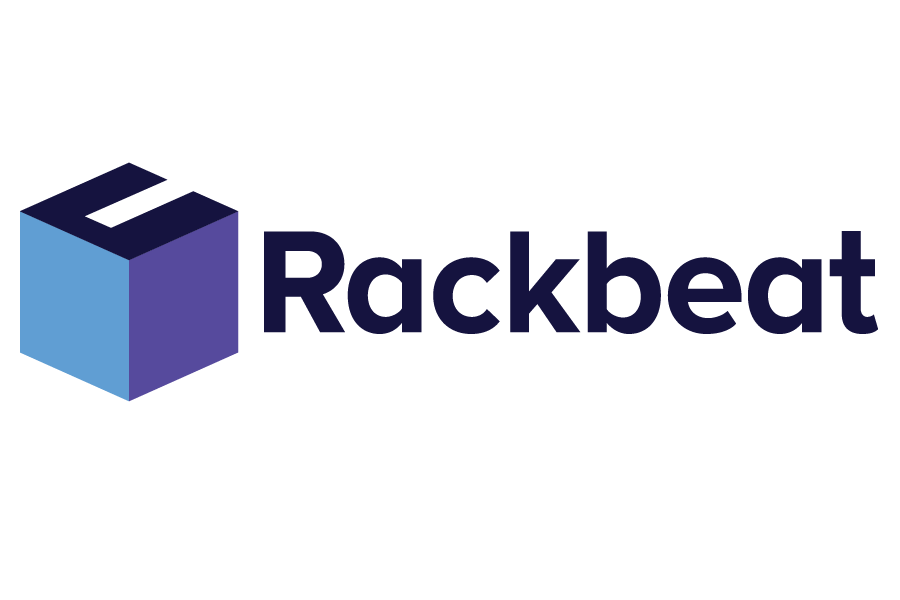What Are the Costs of a Warehouse Management System?
By Rackbeat November 25, 2022

When you are looking to purchase new software for your company, you have to be mindful of the unknown variables and hidden costs behind the product. A system can seem rather cheap when you buy it, but you often find yourself spending endless hours and money on consultants to make the system work with the rest of your set-up. Additionally, long-term contracts usually provide you with a discount price; however, you will often be hard-pressed to scale up your business once you sign on the dotted line of such deals.
Both scenarios exemplify how you can run into expenses that are part of the Total Cost of Ownership (TCO). This is a term you should get familiar with if you are evaluating the current set-up of your business, considering the purchase of a new system or looking for alternative solutions.
But how would a Warehouse Management System, (WMS), be of value to your company? What are the costs, monetary, temporal, practical, etc., you could be faced with when you purchase a WMS? And how do these costs affect one another? You will find the answers to these questions in this blog as you get full transparency with regard to all the possible costs of a WMS.
What’s Important to Your Business?
The single most important thing you need to be certain of when you buy a new warehouse management system is that the solution you go with suits your business. Thus, you need to clarify what is most valuable to you, both presently and in the future, before you decide to make a purchase. You can do that by answering the following questions:
- Can real-time updates on my warehouse and stock data be an asset for me?
- Do any stakeholders need to access data?
- Am I protected against the loss of data, e.g. if your system crashes or you run into ransomware attacks?
The Total Cost of Ownership of a WMS
The TCO, an acronym for Total Cost of Ownership, allows you to compare the profitability of different systems. The TCO has a lot of variables such as the allocation of resources for the installation and the onboarding of a system. Many variables are more covert, though, such as the effect a system has on the rest of your company infrastructure as well as the customer experience.

These hidden, or often overlooked, expenses and implications, which we will expand upon, can determine whether a system is profitable or not. When it comes to warehouse management the effect of these variables increases drastically the greater the volume and complexity of your business.
“Generally we recommend dedicated systems for the business areas that are crucial to your company: e.g. warehouse management for companies that buy and sell products. The greater the volume of your products and warehouse complexity, the more you need a qualified, dedicated warehouse management system.”
– Morten Bæhrenz, CEO & Co-founder of Rackbeat.
So, to be perfectly clear: if your product volume and/or warehouse complexity are extensive, i.e. you might operate in multiple markets or sell products with an expiration date, then a dedicated, cloud-based warehouse management system (WMS) makes a world of difference. Not only in terms of your finances but also in customer & job satisfaction, the transparency of data and much more.
Types of Costs
Following the mapping or consideration of the most valuable aspects of your business, the next logical step is to think about what type of expenses you would have to pay aside from the cost price. The following questions can help you determine the cost of these expenses:
- What’s the cost of the installation and integration of the system with your additional set-up? Do you have the necessary resources in-house to perform these tasks or do you need consultants? And how many hours will it take to perform these tasks?
- Do you need to buy licenses – and if so: what will that cost you? Can these licenses be re-used for multiple employees or do you need to buy extra?
- How are system updates and maintenance performed?
- What is the length of the contract? And what are the specific terms of the contract when it comes to the possibility of scaling or the option to prematurely terminate the contract?
- How do you manage your supply chain? Do you have the proper balance of what and how much is ordered? If not, you will often find yourself with an overloaded stock or being unable to meet the demand of your customers.
Read our guide to maintaining your inventory efficiently.
What’s the Cost of a Poor Customer Experience?
Surprisingly enough, the customer experience is a factor that is quite often neglected even though it is crucial to your business. A study shows that 78% of the respondents feel that the customer experience is just as important as the product they buy.
“Our biggest challenge has been selling products which, in reality, were out of stock – especially during peak load periods such as Black Friday or Christmas – and all the rest of the problems we face when the volume is turned up a notch. We got tired of having to call 500 people and say: Listen, the product you bought with a 20% discount… We can’t provide it, after all.”
– Mikkel Vestergaard, CEO at A-hjort.
Thus, it is essential that you consider how the warehouse management system might affect the customer experience. You should therefore know:
- How the system will ensure that functions pertaining to the customers have correct and updated data – so you don’t, for instance, sell products that are out of stock.
- How the system will activate your supply chain before your stock reaches a critical point – without tying too many resources to your stock.
What’s the Cost of Onboarding?
In order to get the most out of any system it is essential that all users can apply it for their specific line of work and that relevant knowledge can be distributed to new employees. This is where onboarding comes in handy. Yet, it is an aspect that is often overlooked when its time to assess the costs of a system.
Newer systems, however, tend to focus on intuitive UX, which makes the need for an assisted onboarding package less salient since you can learn to operate the system from the supplier’s Helpdesk. But if you want assisted onboarding, you should make sure that it can be adapted to your specific needs. These might include the transfer of data, ensuring the correct integration with other systems and that the relevant users are provided with the proper training, among other things.
Learn more about Rackbeat’s onboarding package here.
“Rackbeat helps you work better and smarter by allowing you to gather all your information in one frame. Contrary to previous warehouse management software the onboarding only takes 10-15 minutes. In other words: Rackbeat provides the same lightness you feel when a headache disappears. It simply makes everything so much easier.”
–Thor Mønsted, CEO, Unity Tech.
Prioritize Transparency When You Choose a WMS
Some WMS suppliers have standardized packages with fixed prices – which, at first look, makes it easy to determine the cost of their systems. But that is only scratching the surface. Because what will happen if you want to scale your business up or down? How are updates and support handled? Do all users get the same profile or can they be tailor-made so the warehouse worker doesn’t get access to the same functions as the warehouse manager or the customer service employee?
Our experience tells us that many people overlook the immense value that a WMS gives you throughout your whole value chain. Oftentimes because people don’t realize the impact a WMS has on the customer experience as well as the importance of an adequate onboarding process, even though these things affect the costs of a system.
So, what does a WMS actually cost? To summarize: you should be aware of the following variables when you estimate the Total Cost of Ownership:
- Start-up costs (implementation and onboarding)
- The costs of operation (the ongoing costs of a system, e.g. the fixed subscription costs)
- Maintenance and downtime costs: how many resources do you need to expend when you need to update the system? What will it cost you, in terms of the loss of revenue, when the system has a planned downtime?
Regarding the costs of operation for a WMS, the subscription price per user varies between a couple of hundred dkk to more than a 1,000 dkk depending on the system. Do pay attention to the fact that this applies to all products with fixed prices. Many systems, on the other hand, offer tailor-made solutions and thus adjustable prices.
Rackbeat thinks that you deserve transparency in your costs which is why both direct and indirect costs should be considered and accounted for when you buy a warehouse management system. And you should never compromise your needs: the right solution is the one that suits your business, and you shouldn’t have to pay for functions you don’t need.
Thus, we set the price for both our subscriptions based on the number of users you need. By constructing our prices in this manner, we make it very simple for you to put together the package you need for your business. In this way, e.g. you won’t have to pay for functions that are only relevant for B2B companies if you are running a B2C business.
We also focus on user adaptation in our onboarding package. It is, of course, optional to buy our onboarding package – so you don’t have to acquire it if you don’t need it. But if you choose to buy our onboarding package, Rackbeat will set up the system to accommodate the needs of your company while every user will receive thorough training in the relevant functions of the system.
Find the Right Solution with the Relevant Features
You can come much closer to finding the perfect inventory solution today by booking a free presentation of Rackbeat with one of our inventory and warehouse experts. We will ask you to explain the specific needs of your business, so we can show you how Rackbeat will help you with just the right features.

You can also try Rackbeat for free with our 14-day trial right here – and you don’t have to commit to anything long-term or provide billing information. You might realize that the costs of not choosing Rackbeat are heavier than if you do take the leap and use our warehouse solution.



